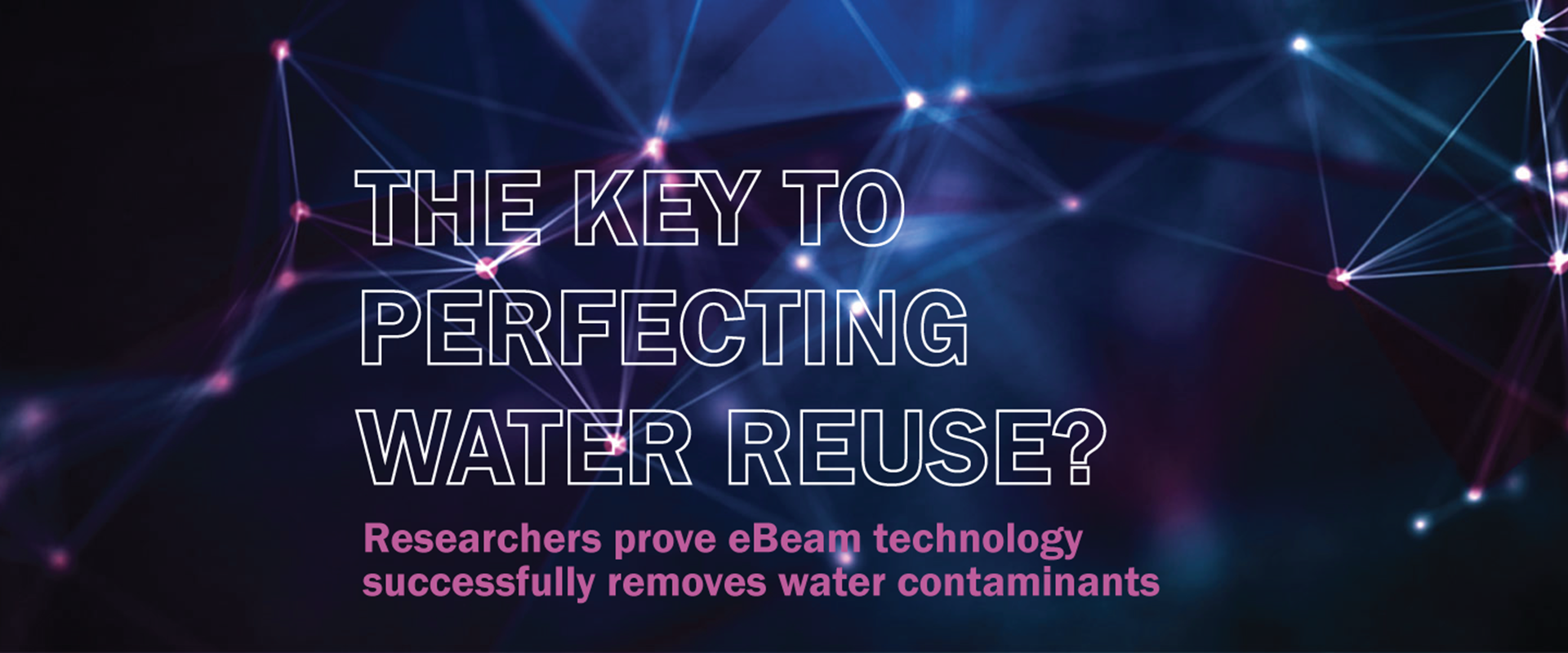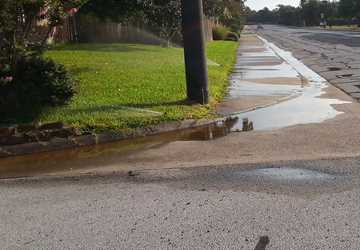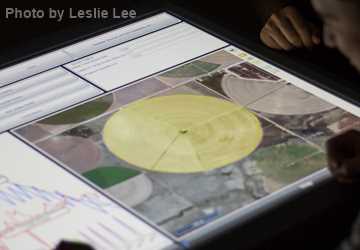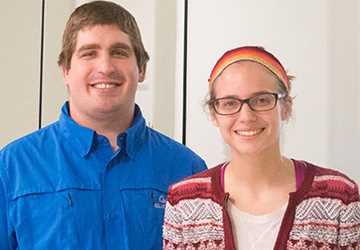A technology that uses electrons moving at almost the speed of light may soon be used to turn wastewater into drinking water.
In a joint research project, scientists from The Texas A&M University System successfully demonstrated the feasibility of using electron beam, or eBeam, technology to treat wastewater for direct potable reuse. Dr. Suresh Pillai, director of Texas A&M’s National Center for Electron Beam Research, and Dr. Bill Batchelor, R.P. Gregory ’32 Chair professor in Texas A&M’s Zachry Department of Civil Engineering, collaborated on the project.
With Texas’ decreasing water availability and increasing water demand, Pillai said a growing number of water providers are using or considering water reuse, either direct or indirect, for drinking water.
Potable reuse is using treated wastewater to supplement drinking water supplies. Indirect potable reuse usually has the treated wastewater enter an environmental buffer such as a river, lake or aquifer before it goes to the drinking water treatment plant. Direct potable reuse uses engineered treatment processes instead of an environmental buffer to purify the wastewater before introducing it either into the drinking water treatment plant or directly into the drinking water.
“Developing improved water treatment processes is a key aspect of solving water challenges, particularly those in direct potable reuse,” Batchelor said.
The researchers based their project on the hypothesis that eBeam technology is a water treatment process that can make wastewater clean enough for direct potable reuse.
“No one has done research on using eBeam technology with the focus being on water reuse and contemporary and emerging contaminants,” said Pillai, who is also a professor in Texas A&M’s Department of Nutrition and Food Sciences and Department of Poultry Science. “It has always been done with wastewater treatment as a focus, rather than water reclamation.”
A Superman-like energy
Put simply, eBeam technology uses high-energy, high-speed electrons generated in a linear accelerator to modify or transform items. The electrons are moving so fast, Pillai said, “if you sat on one of those electrons, you could go between Los Angeles to New York about 37 times in one second.”
Pillai said this technology can be used for many applications. For example, the medical industry uses it to sterilize medical products and devices, and the food industry uses it to eliminate microbial pathogens in ground beef and spices.
Destroying pollutants
The project looked at using eBeam radiation to remove pathogens such as salmonella, shigella and Hepatitis A virus and other pathogens, as well as estrogenic compounds and two emerging pollutants.
In a series of experiments, effluent from two wastewater treatment plants in College Station were spiked with defined numbers of bacterial, viral and protozoan pathogens and estrogenic compounds and were then exposed to varying eBeam doses.
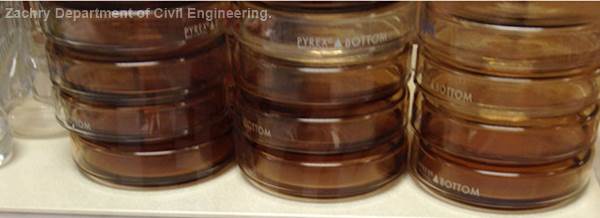
The researchers were able to establish the eBeam dose ranges needed to kill the pathogens; however, the exact dose for eliminating estrogenic compounds needs further research, Pillai said.
Batchelor conducted a series of experiments to evaluate the potential of eBeam treatment to remove trace levels of bromate and perfluorooctanoic acid (PFOA). Bromate is classified as a possible human carcinogen and PFOA is a waterproofing material that persists indefinitely in the environment. The experiments showed that the eBeam irradiation was able to break down these compounds.
Feasible and cost-effective
“Applying electron beams to water is an innovative treatment process that can not only destroy pathogenic microorganisms that can cause disease but also destroy chemical contaminants that also have adverse effects on human health,” Batchelor said. Relatively high doses are required to accomplish this.
Using eBeam technology could eliminate some of the traditional steps in wastewater treatment, such as chlorination, ozone and UV, Pillai said, adding that eBeam treatment does not involve heat or chemicals or produce secondary undesirable wastes. “Therefore the carbon footprint of this technology is also significantly smaller compared to current technologies,” he said.
Applying electron beams to water is an innovative treatment process that can not only destroy pathogenic microorganisms that can cause disease but also destroy chemical contaminants that also have adverse effects on human health.
While using eBeam technology on wastewater is feasible, both researchers said there are some issues that still need addressing before it is commercially used.
Batchelor said one of the important findings of their research was that the composition of the wastewater can have major effects on contaminant removal, both positive and negative. “This means that the effectiveness of eBeam treatment needs to be considered on a case-by-case basis,” he said. “Although the project made progress in developing a tool to predict eBeam effectiveness for different waters, more information is needed on the process to allow the tool to make accurate predictions.”
The project did establish that the technology would be extremely cost effective for very large wastewater treatment plants that treat volumes in excess of 100 million gallons a day, Pillai said.
“If one of those large plants decided to use this technology, the economic model says it is far cheaper than anything else around,” he said. “But the problem we have is that there are not machines that are being designed to treat that volume of water. That is why this technology has not moved forward.
“There needs to be more research and development to build a type of machine that can be put into wastewater plants,” Pillai said. “There is currently no machine that is powerful enough.”
Having this technology in the ‘tool box’ of water reclamation technologies would open up innovative, high-value, commercially viable and environmentally sustainable solutions and strategies for water reuse.
He said the project has had an impact both regionally and nationally. Engineers from the city of Dallas have performed test runs with their water samples using the eBeam technology, and the city is currently exploring the possibility of adopting the technology in its operations.
The U.S. Department of Energy “Accelerators for America’s Future” program is exploring the use of linear accelerator technologies for environmental applications.
If eBeam technology is to be used for water treatment, Pillai said it will create a paradigm shift. “One of the big goals in using electron beam is to make transformational changes in how to treat water,” he said.
“Having this technology in the ‘tool box’ of water reclamation technologies would open up innovative, high-value, commercially viable and environmentally sustainable solutions and strategies for water reuse.”
This project was funded by a joint Texas A&M AgriLife Research, Texas A&M Engineering Experiment Station and Texas A&M AgriLife Extension Service Water Seed Grant: Creation and Deployment of Water-Use Efficient Technology Platforms. In 2013, the Texas Legislature charged the agencies to address the critical nexus for water-use efficiency as part of addressing the future water needs of Texas.
Explore this Issue
Authors
As the former communications manager for TWRI, Kathy Wythe provided leadership for the institute's communications, including a magazine, newsletters, brochures, social media, media relations and special projects.

